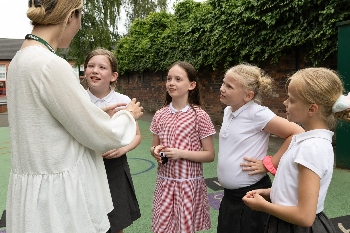From before the term ‘public realm’ was a thing until February of this year, no one would have talked about public realm design and flexibility and agility in the same breath. Public realm was the stuff of lofty, long-term visions approved via byzantine, calcified processes and realised in rigid, unalterable forms. The outcome all-too-often felt like all the focus had been on ‘realm’ and little or none on ‘public’.
What has changed and what has Covid taught us about public realm?
It has taught us that public realm can be reconfigured quickly. In London, the GLA Streetspace initiative has rapidly and radically changed the way we use and interact with public open space. It has also taught us that this change is easy to enact and well supported when the purpose of the change is very clear; replacing the sometimes confusing jargon of the landscape architect and the town-planner with simple, clear messages like easier, safer cycling and walking, improved air quality and better public health.
Covid has also shown us that public realm does not have to be dominated by cars and other motor vehicles. Currently temporary measures to make roads shared space have captured imagination and demonstrated the possibility of more engaging, more inclusive and genuinely less polluted urban areas. There is a tension however as appetite for convenience re-asserts itself over these less easily defined benefits and we would be unwise to write the motor vehicle out of the public realm script just yet.
Covid has also taught us that it is easy to genuinely engage the community in defining what public realm it wants. It has rapidly accelerated the transformation of community engagement from a dreary and formulaic ritual, all-too-often mistrusted by communities and distained by authorities to a rich, multi-faceted relationship that jointly defines need, shapes designs and curates outcomes. There is still a long way to go on this journey but Covid has accelerated us along the way.
As well as faster change, the challenging of transportation shibboleths and better engagement, there are encouraging signs that public realm design is becoming more bold, more willing to experiment and less bound by convention. ‘Fail Fast Fail Often’ is more normally associated with tech innovation than in public realm design but we are seeing promising indications that public realm can be experimental, temporary and intuitive to very rapidly changing community needs. We can expect to see public realm become progressively less monolithic and more ‘pop-up’, using richer community engagement to flex and adapt to community needs
Public realm will be a key component in a post-Covid ‘green recovery’. Even before the crisis, more and more organisations declared climate emergencies and, with them, ambitious commitments to de-carbonising our communities. Putting public realm at the heart of this is simply too good an opportunity to miss.
There are already great examples of this globally from Boston’s ‘Big-Dig’ (pictured) to New York’s ‘Dryline’ to Amsterdam and the Randstat’s focus on polycentricity; the use of imaginative public realm as part of a placemaking strategy to create a multitude of self-sustaining, 20-minute communities, rather than one urban centre, surrounded by residential dormitories. Already we are seeing an increasing appetite for zero-carbon master-planning which quantifies and codifies the net carbon position of place.
Experiences of lockdown have made communities more aware of their relationship with – and reliance on – public realm. More than ever, people realise that public realm done well supports their health and well-being, focuses their communities and improves their quality of life. We can expect that public realm design can no longer be a semi-detached afterthought to master planning or a stand-alone transport strategy divorced from the place it supports. We can expect to see greater integration than ever of public realm and transportation design into placemaking – including in the development of the benefits-case for place.
In 1665, Sir Isaac Newton had his ‘Year of Wonders’ when, isolated from all distractions on his family estate in Lincolnshire due to the plague epidemic of that year, he used the time to revolutionise humankind’s understanding and application of science. Will 2020 represent a ‘Year of Wonders’ for designers of public realm, with similar revolutionary advancement? The opportunity is there...
Peter Hogg is UK cities director at Arcadis UK












